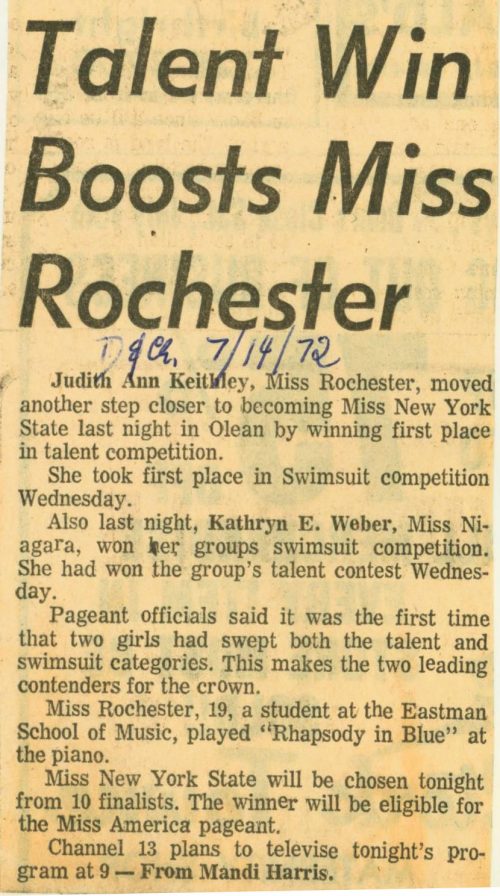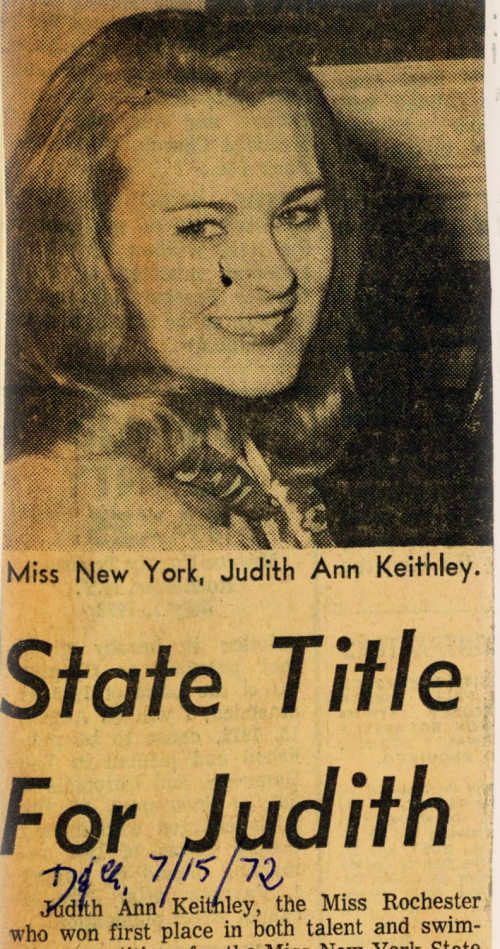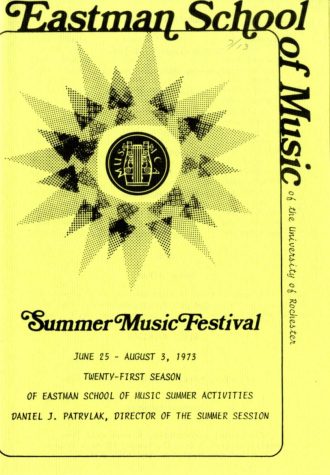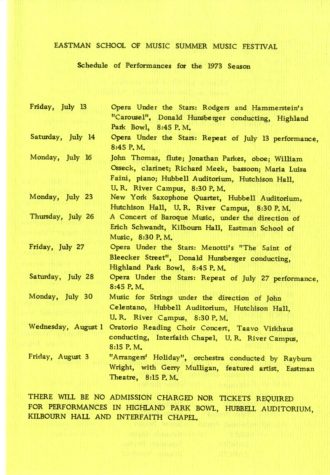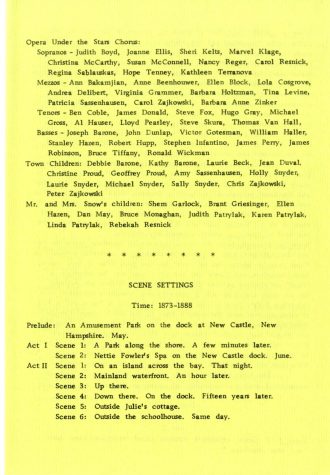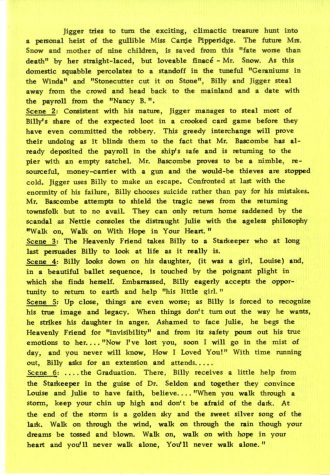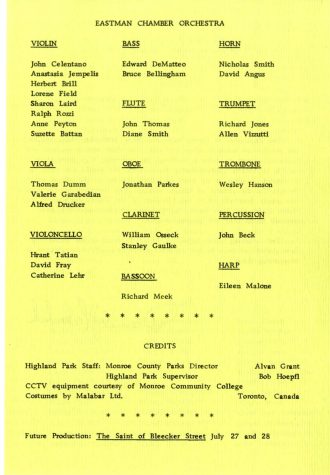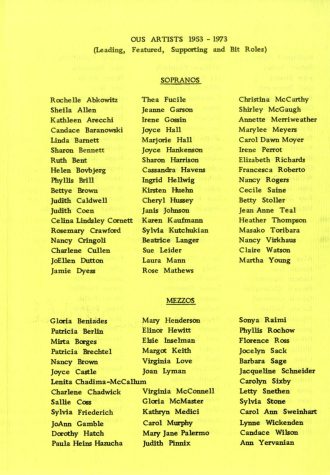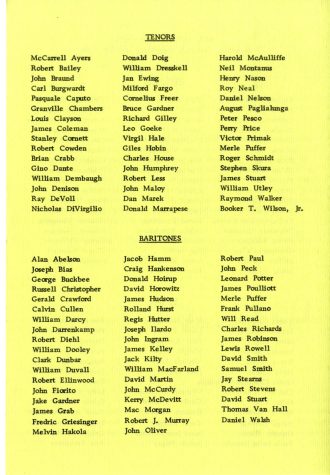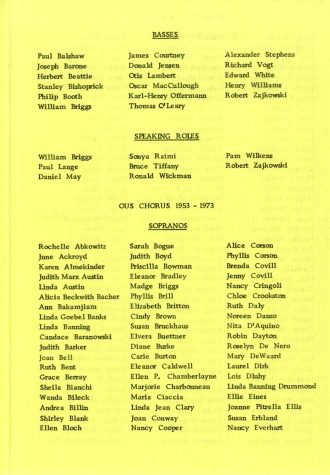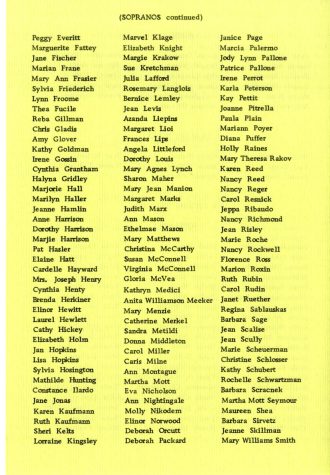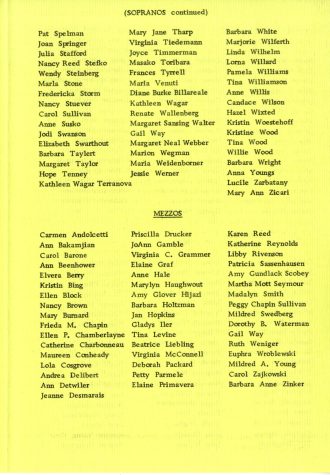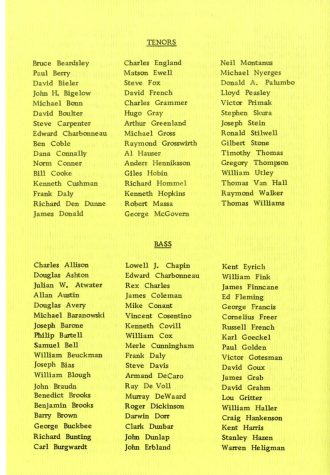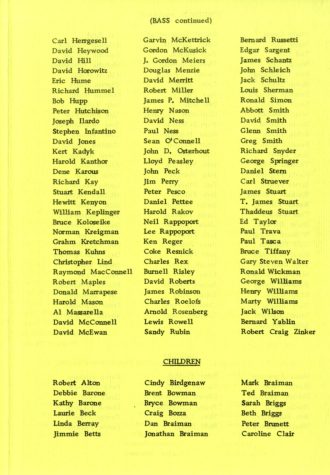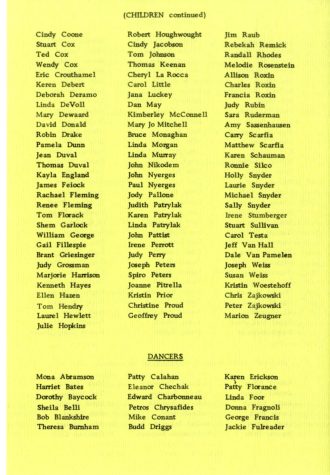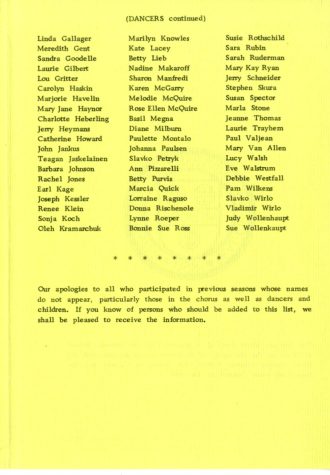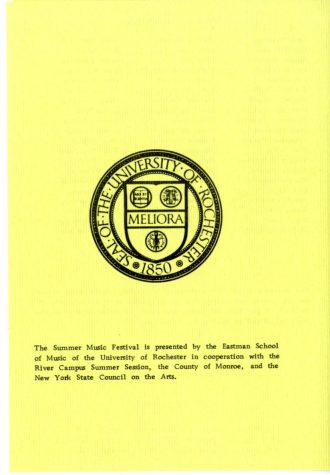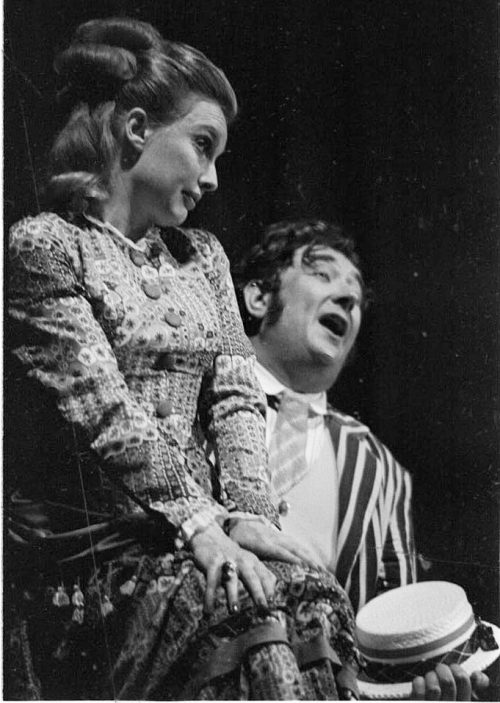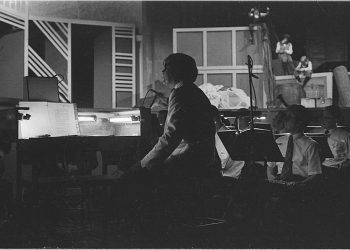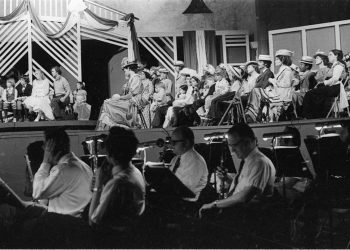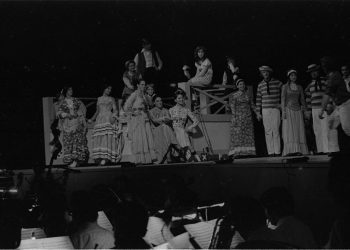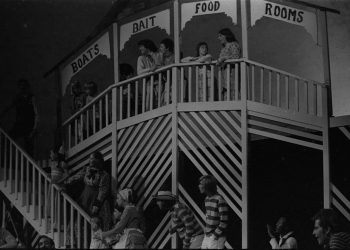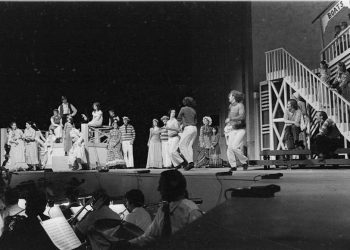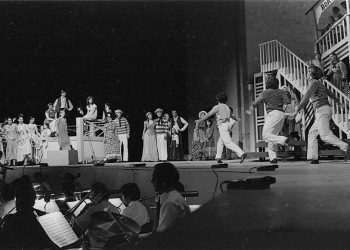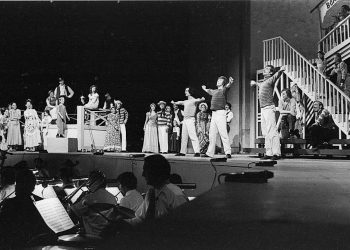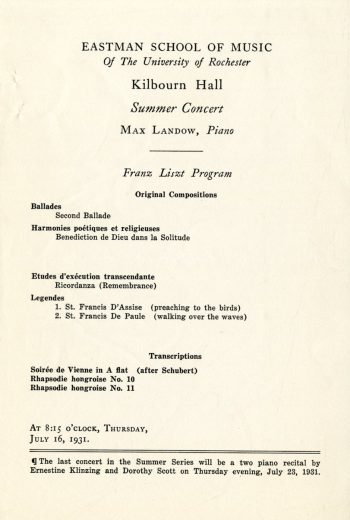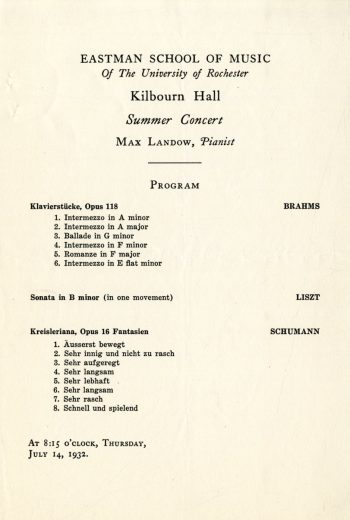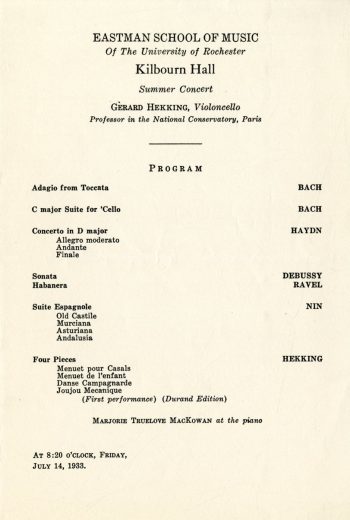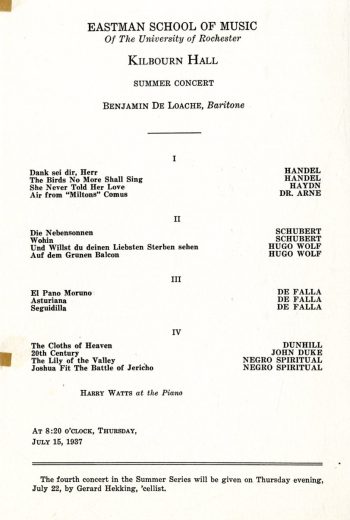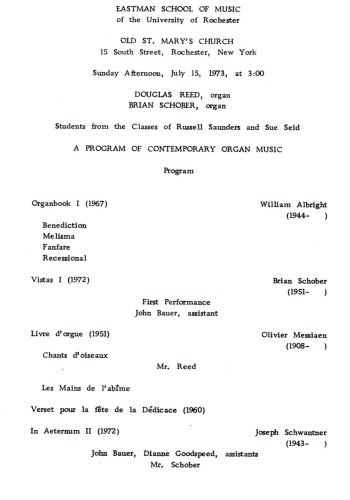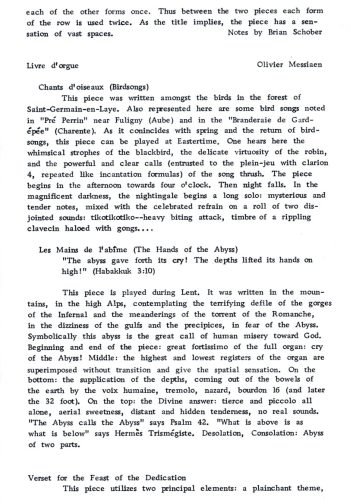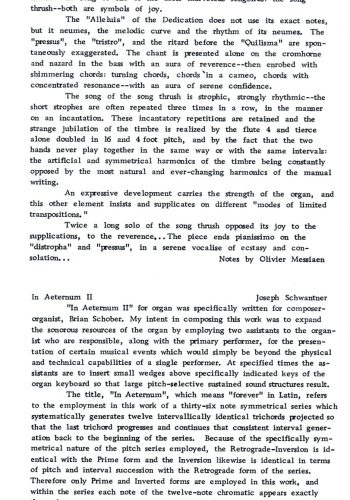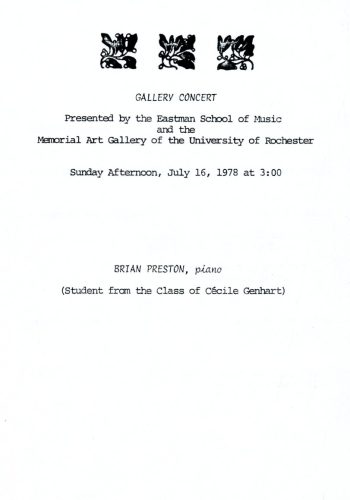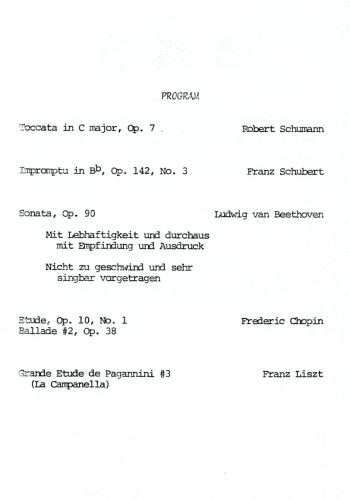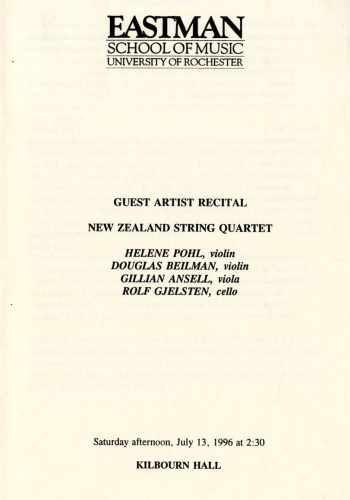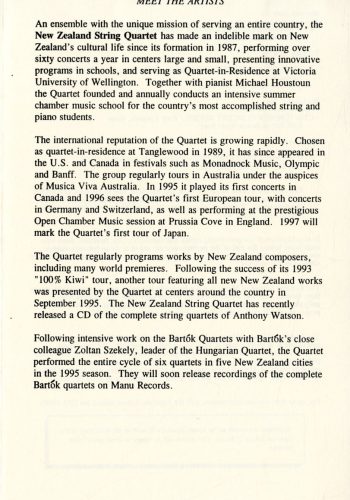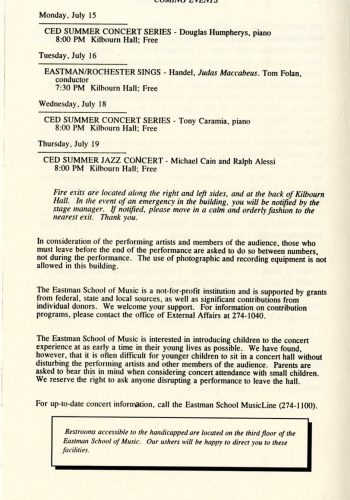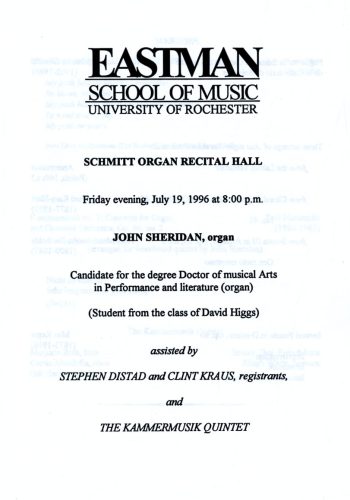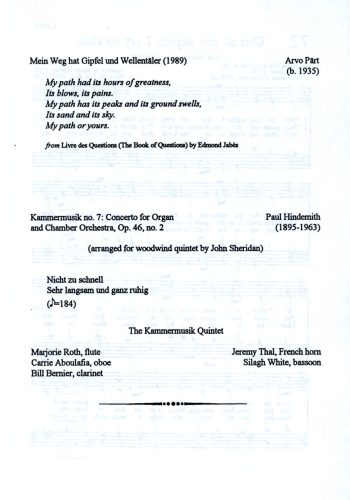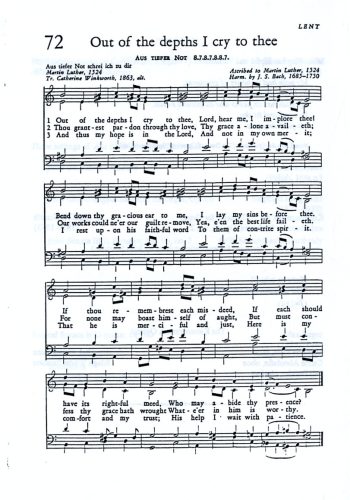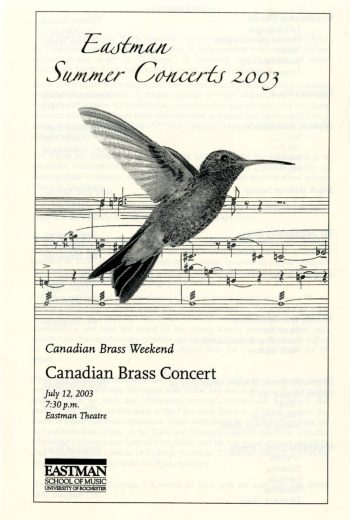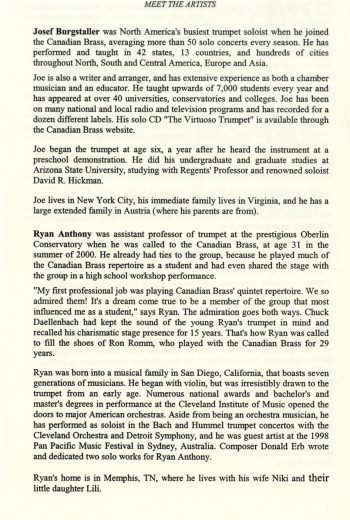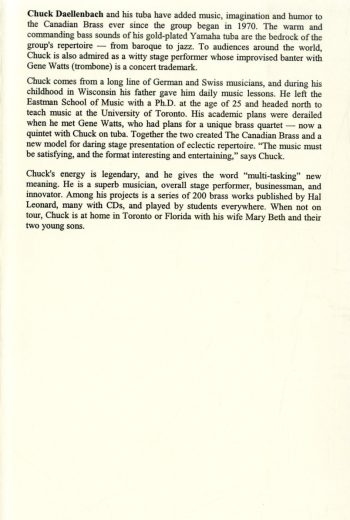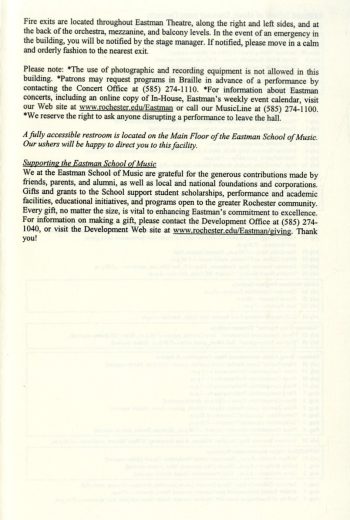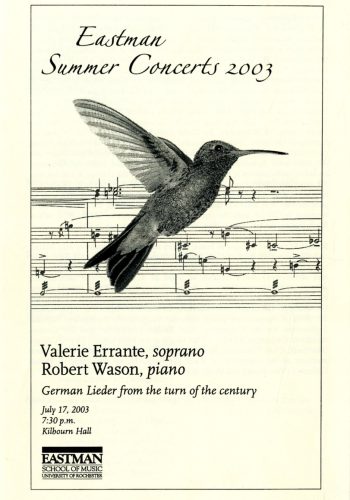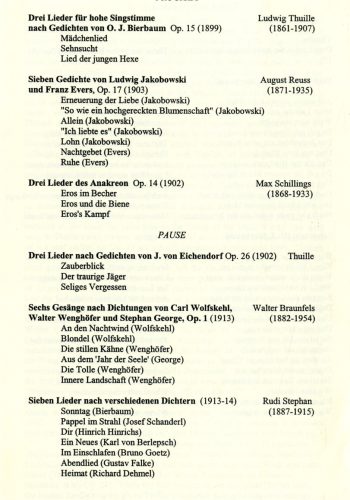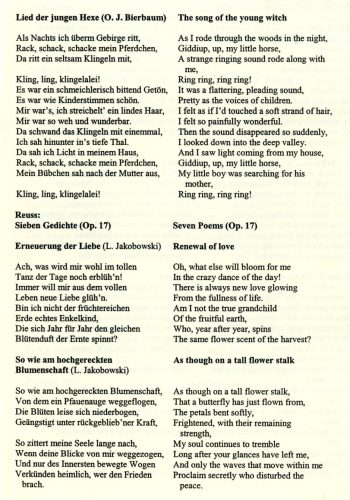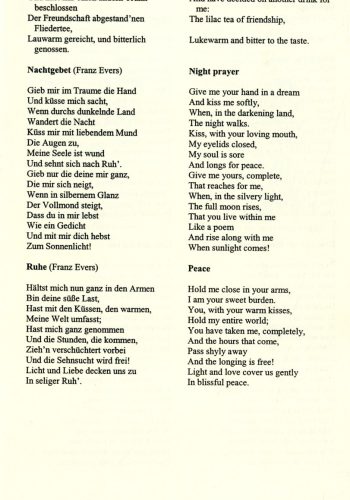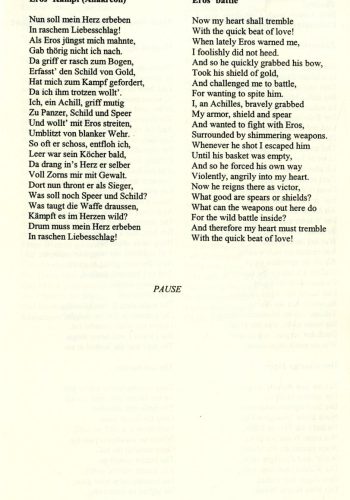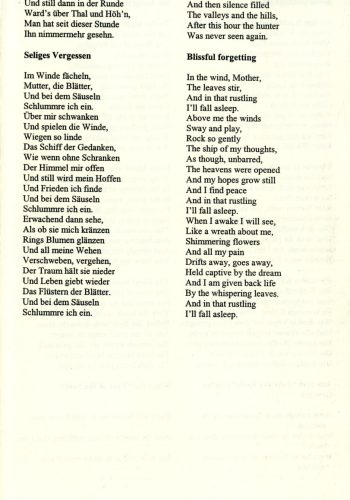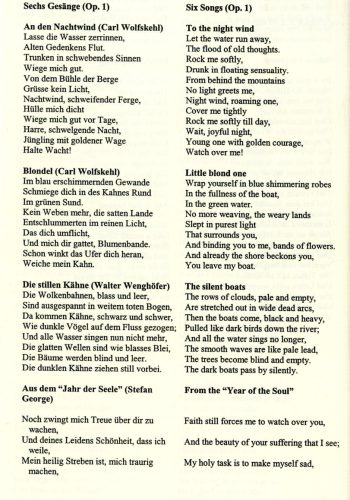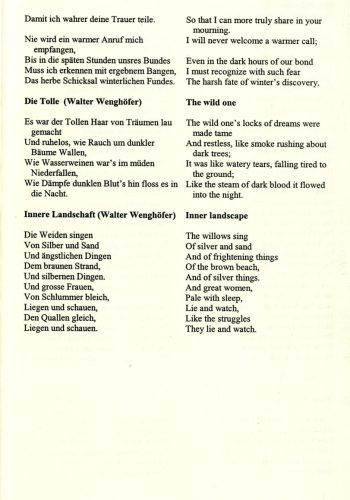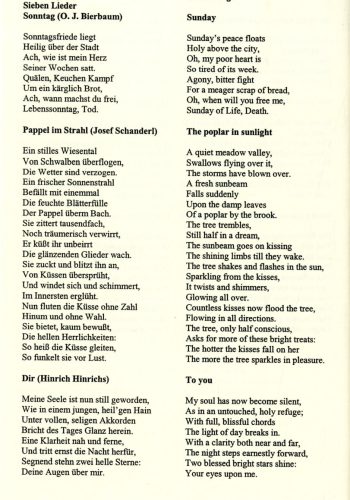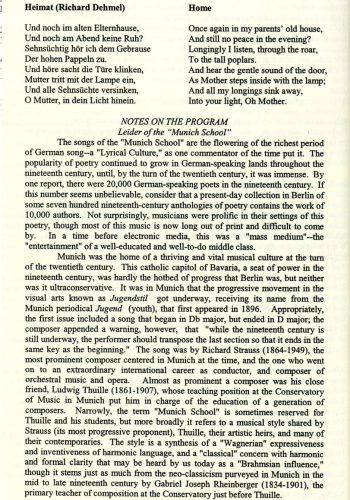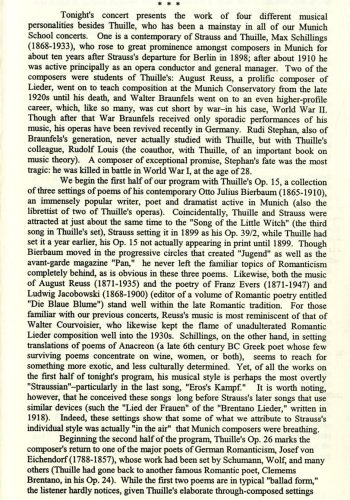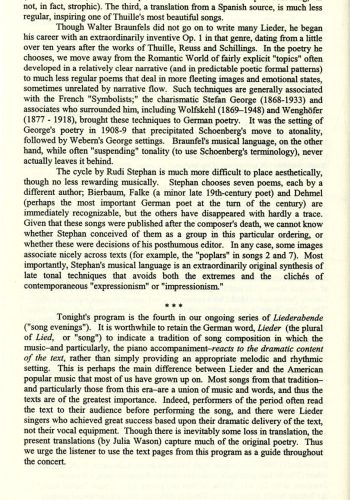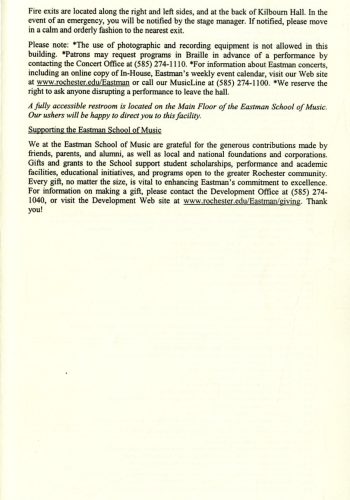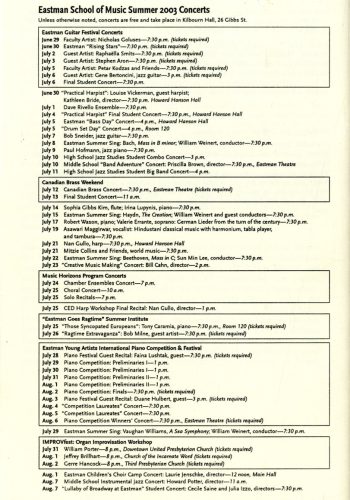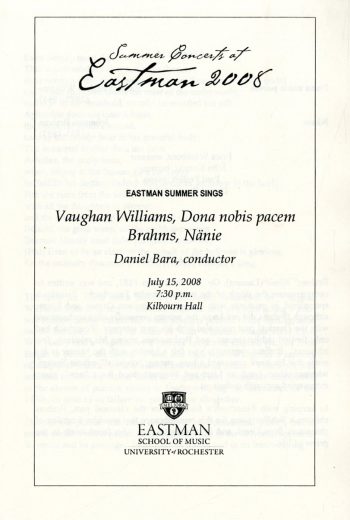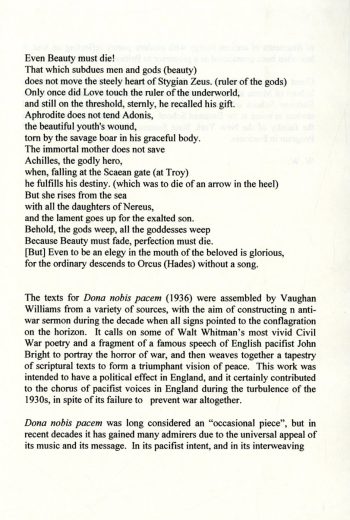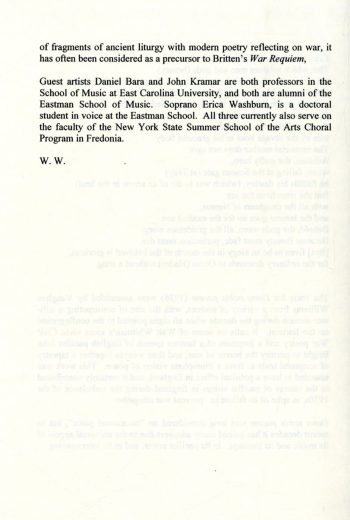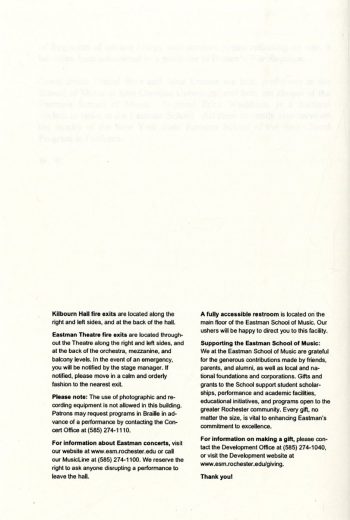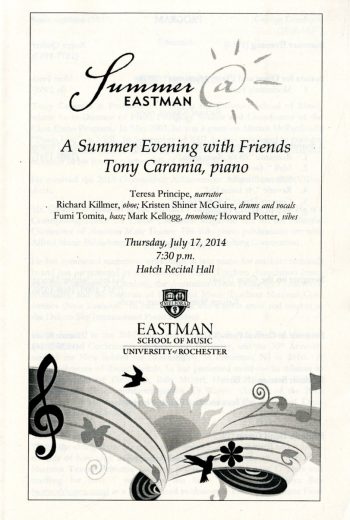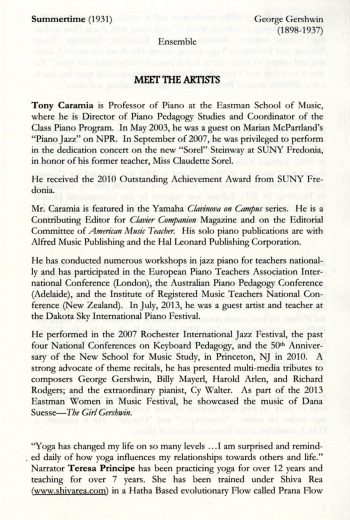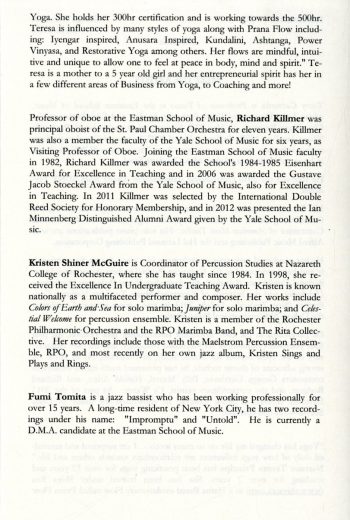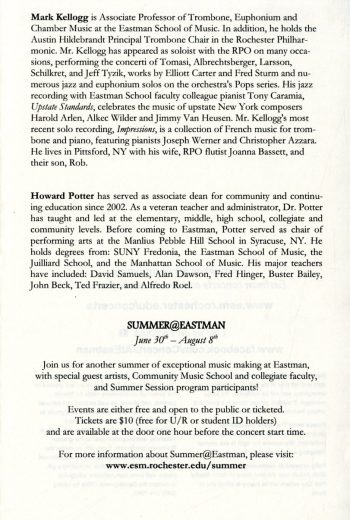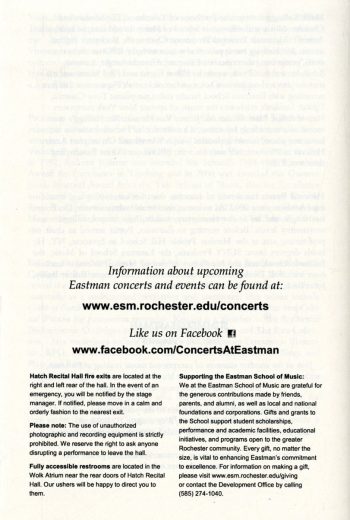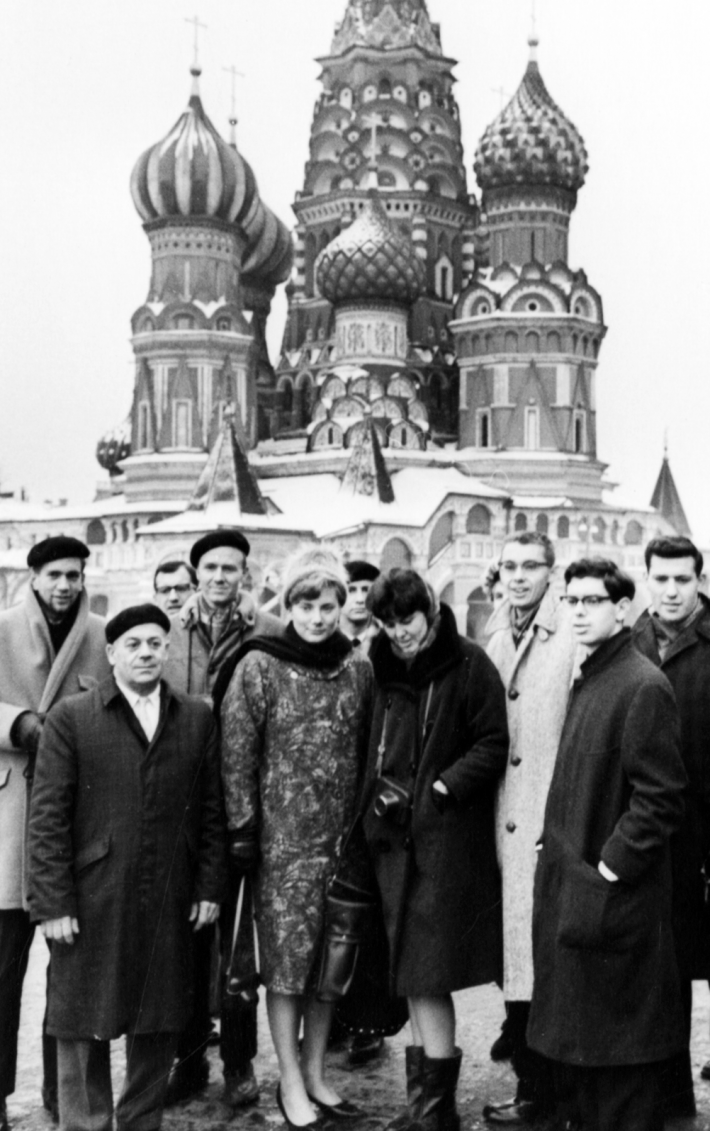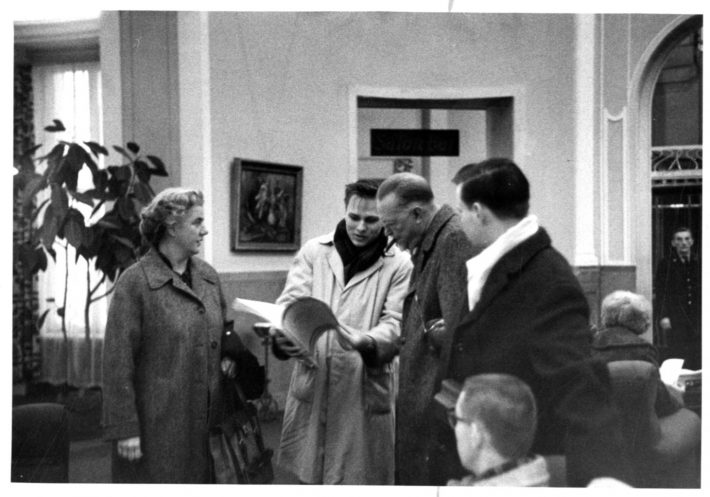Published on July 11th, 2022
1972: Eastman School student named Miss New York State in beauty pageant
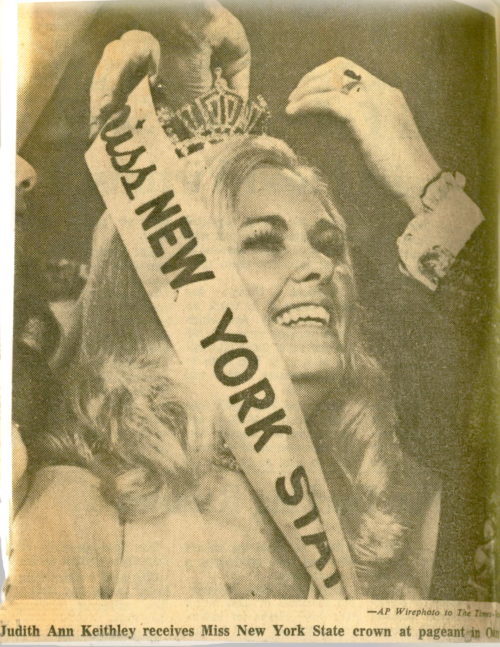 Fifty years ago this week, on July 14th, 1972, an Eastman School student earned a distinction not in the musical world, but in the realm of beauty pageants. Judith Ann Keithley, aged 19 and a native of Charlottesville, Virginia, was at this time the reigning Miss Rochester; she won the annual Miss New York State competition, beating out nine other finalists. In winning the Miss New York State crown, Ms. Keithley won first place in both the swimsuit portion and the talent portion of the competition. In the latter, she performed George Gershwin’s Rhapsody in Blue on piano.
Fifty years ago this week, on July 14th, 1972, an Eastman School student earned a distinction not in the musical world, but in the realm of beauty pageants. Judith Ann Keithley, aged 19 and a native of Charlottesville, Virginia, was at this time the reigning Miss Rochester; she won the annual Miss New York State competition, beating out nine other finalists. In winning the Miss New York State crown, Ms. Keithley won first place in both the swimsuit portion and the talent portion of the competition. In the latter, she performed George Gershwin’s Rhapsody in Blue on piano.
Ms. Keithley would go on to compete in the 1973 Miss America Pageant, held in Atlantic City, New Jersey on September 9th, 1972. That year’s Miss America title was won by Cindy Meeuwsen (Miss Wisconsin). Whereas today a total of seven women holding the Miss New York State title have won the Miss America crown, up until 1972, only one Miss New York State had done so (Bess Meyerson, in 1945). Later in time, Ms. Keithley was quoted in The New York Post commenting on the decision of the Pageant officials to do away with the swimsuit portion of the competition. On that occasion Ms. Keithley opined that a contestant in the Miss America Pageant needed to be the “whole package” and elaborated, “It ain’t just about jiggle and jangle, this is a competition that turns out women who have something to say, know how to say it, say it with conviction and they stand up for their causes.” [1]
Ms. Keithley (later Mrs. Judith Graham) was enrolled at Eastman for three years (1971-74). Interestingly, her recognition as Miss New York State does not appear to have been publicized to the Eastman School community; no mention of her statewide achievement, nor of her national appearance in Atlantic City, Ms. Keithley was printed in Notes from Eastman (forerunner publication to today’s Eastman Notes). Perhaps the fairest observation is that Notes from Eastman was less socially oriented than today’s publication, being of a shorter format and more tightly restricted to news of an academic nature, whereas nowadays we recognize and celebrate, via Eastman Notes and also the various social media, that Eastman School students are, indeed, well-rounded individuals who can and do achieve distinctions in areas outside of music. So, too, American society and American academe were rather different from today back in 1972, when women still had strenuous battles to fight in professional, legal, and social contexts to emerge from centuries-old patriarchal domination and sexist expectations. It is noteworthy that Ms. Keithley was asked by a writer for the Rochester Times-Union whether she felt “exploited” in the contest as some feminists might have suggested.[2]
1973 would not be the only year when an Eastman School student has advanced to the Miss America Pageant. The next Eastman student to do so was graduate student Susan Spafford, BM ’97, MM ’01, who was crowned Miss Pennsylvania in 1999 and then went on to the make the top three at the Miss America Pageant, being named second runner-up. In the talent portion of the contest, Ms. Spafford performed the virtuosic solo Polish Caprice by Grazyna Bacewicz.
[1] “Former Miss NY says pageant ditching swimsuits is a mistake” by Gabrielle Fonrouge. New York Post, 5 July 2018, online at URL: https://nypost.com/2018/06/05/former-miss-ny-says-pageant-ditching-swimsuits-is-a-mistake/. Accessed on 7 July 2022.
[2] “Eastman student captures Miss N.Y. State crown” by Barbara O’Reilley. Rochester Times-Union, July 15, 1972. Preserved in Rochester Scrapbook June-July 1972, page 89. Sibley Music Library.
1973: Opera Under the Stars production of Carousel
In the annals of Rochester’s musical life, there have been several attempts to establish a viable municipal opera, two of which were Opera Theater of Rochester (in the 20th century) and Mercury Opera (in this century). Indeed, at one time, an opera company was founded within the Eastman School of Music: the Rochester American Opera Company (est. 1924), which has been featured previously in “This Week at Eastman”. At another time, for nearly a quarter-century there was an operatic venture that was not a company, but instead, a collaborative, co-operative initiative based on a working arrangement between various parties. Opera under the Stars was made possible by the Eastman School of Music, the County of Monroe, the City of Rochester, the Rochester Musicians’ Federation, and, later on, later on, the New York Council on the Arts working together to create opera for the enjoyment of the greater community. Opera under the Stars was founded in 1953 and continued through the summer of 1976.
The support of the Eastman School was essential for the Opera under the Stars venture, for Eastman contributed not only financing, but also provided artistic and logistical support, together with supply of conductors, cast members, and chorus members. The initiative had been the idea of Leonard Treash, artistic director of the Eastman School’s Opera Department (served 1947-76), and was modelled in part after the summer opera programs that had been successful in St. Louis and in Cincinnati.[1] The concept was that full operatic productions—complete with scenery, costumes, and a symphony orchestra—would be staged at the Highland Park Bowl, the outdoor amphitheater situated at the end of Highland Park bordered by South Avenue. Significantly, all performances would be free of charge. The original concept called for four productions each summer, one of which would be a Broadway musical theater piece; that plan ultimately proved unfeasible, and instead, two or else three productions became the norm, with one of the productions occasionally taking the form of a double-bill of two short works. In the first season (1953), two productions were mounted: Puccini’s La Bohème, and Verdi’s La Traviata. Musical theater was introduced in 1965 with a production Kurt Weill’s Street Scene, followed in 1972 by Lerner and Loewe’s Brigadoon in 1972 and Rodgers and Hammerstein’s Carousel in 1973.
And so it was that forty-nine years ago this week, a production of the musical Carousel was staged in Highland Park (two performances) to favorable local reviews. The production was the first in the 21st season of Opera under the Stars. The printed program is displayed here, and the Eastman School of Music is, figuratively speaking, imprinted all over the program. The producer, Daniel Patrylak, was an Eastman School administrator (served in that capacity 1967-75); the conductor, Donald Hunsberger (served 1964-2002) was an Eastman faculty member; and a second faculty member, John Maloy (served 1966-2005), was in the cast. Both the sound reinforcement head and the orchestra librarian, Ros Ritchie and Donald Jones, were Eastman School personnel. Whereas the orchestral musicians for Opera under the Stars productions were normally supplied by the Rochester Federation of Musicians, for this production the supply orchestra came from Eastman, that being the Eastman Chamber Orchestra, comprised primarily of Eastman School faculty members joined by some students. The cast numbered included seven Eastman School alumni and one enrolled student; they were Joyce Hall, ’58; Cecile Saine, ’72; William MacFarland, ’72; Robert Zajkowski, ’59; James Courtney, ’73 (and a member of the Metropolitan Opera Company since 1979); Christina McCarthy, ’73; and William Briggs, ’58; and John Oliver, ’75 had just completed his sophomore year. Still more Eastman students were represented in the chorus. The complete roster of Opera under the Stars artists and chorus members to date (1953-73) was printed in the program, together with the names of dancers and of children’s chorus members. Many of the children’s chorus members were children of Eastman School faculty members and staff members. Look closely, and you’ll also see the names of two Fleming sisters, each of whom would later earn a master’s degree at Eastman.
For the Eastman School of Music, there were numerous positives from supporting Opera under the Stars, a series with more than 20 years of successful functioning. By 1974 it was estimated that approximately 250,000 people had attended Opera under the Stars productions—yep, fully one quarter of a million!—since the beginning. Further, the initiative had given many Eastman students (both singers and instrumentalists) paid, professional experience. The initiative had also provided numerous Eastman faculty members with additional performing opportunities and income. The Eastman School had received a great deal of publicity not only in the local media and Rochester press, but also in the national media, including in such journals as Musical America and Opera News. For the community of Rochester, the initiative had permitted collaboration with Rochester citizens by including them as soloists, orchestral musicians, chorus members, and as participants in other functions. On balance, Opera under the Stars represented a truly positive form of outreach: it was one more avenue by which the Eastman School had been brought closer to the citizens of Rochester. Audience size varied from production to production, but at times numbered several thousand people, once estimated at as many as 10,000; the outdoor arrangement was informal, with listeners being free to bring lawn chairs and blankets to sit on the lawn.
In 1976 the Eastman School’s Robert Freeman, Director, announced that Eastman would discontinue its financial support of Opera under the Stars, but would continue to provide logistical support in the way of rehearsal space, orchestral parts, and flats. Ultimately, sufficient support was not forthcoming from other sources, and the initiative was discontinued after the 1976 season. Michael Walsh, music critic for the Rochester Democrat & Chronicle, cited several concerns in a June, 1976 article, pointing out the challenging parking situation, the traffic noise emanating from nearby South Avenue, and an inadequate amplification infra-structure, together with other, more subjective concerns. Mr. Walsh cited a decline in the number of productions (a glance at the complete roster of productions will indicate that he had been mistaken) together with a steady fall-back on musical theater repertory instead of opera (what Mr. Walsh might not have known was that musical theater had been on the Opera under the Stars agenda back in 1953), substantial cuts made in the repertory for the sake of truncating durations of performances.[2] (The latter point is impossible to verify at this later date.) Notwithstanding the financial realities and whatever other prevailing concerns by 1976, the record speaks for itself: a steady, successful run of productions since 1953 that had brought the Eastman School closer to the citizens of Rochester. Two hundred and fifty-thousand-plus opera-goers in 24 seasons is a thumping statistic; after all, the public never turns out an opportunity to enjoy good music outdoors in summer. From time to time a performance might be rained out, but the team always planned for this; every year’s schedule of performances included back-up “in case of rain” dates. Overall, Opera under the Stars had been a winning formula. Bravo and thank you, Professor Leonard Treash!
► Photos by Louis Ouzer, all taken on July 13th, 1973
These shots from the 1973 production of Carousel capture the extent of the production values of the Opera under the Stars concept. Notwithstanding the small, outdoors venue, the insistence on costuming, scenery, and an orchestra was central to the mission. Carousel, Opera under the Stars, Highland Park Bowl, July 13, 1973.
► R1742-9A, R1742-10A, and R1742-11A
Cast members and dancers during a dance sequence. Carousel, Opera under the Stars, Highland Park Bowl, July 13, 1973.
► R1742-9A, R1742-10A, and R1742-11A
Displayed below is the complete roster of Opera under the Stars productions, 1953-1976, all of which were performed in English. It was an impressive run that reflected determination and imagination on the part of the artistic and production teams. Numerous of the standard repertory operas are represented, and several of those were repeated, including La Bohème, Die Fledermaus, The Marriage of Figaro, The Bartered Bride, and Madame Butterfly. In what proved to be the valedictory season of Opera under the Stars, Howard Hanson’s opera Merry Mount was staged, reflecting the conscious decision of the artistic and production heads to stage an American piece on the occasion of the nation’s Bicentennial that summer. The production was based on Hanson’s 1974 revision of his opera that made accommodations for a smaller venue and limited staging and orchestral resources.
OPERA UNDER THE STARS Productions, 1953-1976
All were performed in English at the Highland Park Bowl
| 1st season, 1953 | July 23 & 25 August 12 & 15 |
La Bohème La Traviata |
|---|---|---|
| 2nd season, 1954 | June 21 & 24 July 7 & 10 August 11 & 14 |
Madama Butterfly Marriage of Figaro Die Fledermaus |
| 3rd season, 1955 | June 22 & 25 July 13 & 16 August 10 & 13 |
Tosca The Barber of Seville Carmen |
| 4th season, 1956 | June 27 & 30 July 18 & 21 August 8 & 11 |
Rigoletto Cosi fan tutte Faust |
| 5th season, 1957 | July 4 & 6 July 24 & 27 August 14 & 16 |
Hansel and Gretel Die Fledermaus Martha |
| 6th season, 1958 | July 9 & 12 July 23 & 26 August 6 & 9 |
Don Giovanni The Consul The Bartered Bride |
| 7th season, 1959 | June 26 & 28 July 15 & 18 August 5 & 8 |
Gianni Schicci; and, I Pagliacci Falstaff La Bohème |
| 8th season, 1960 | June 29 & July 2 July 27 & 30 |
The Magic Flute Faust |
| 9th season, 1961 | June 28 & July 1 July 26 & 29 |
The Abduction from the Seraglio Carmen |
| 10th season, 1962 | June 27 & 30 July 11 & 14 August 1 & 4 |
Cosi fan tutte Susannah La Traviata |
| 11th season, 1963 | June 26 & 29 July 17 & 20 July 31 & August 3 |
Tosca Marriage of Figaro Aida |
| 12th season, 1964 | June 24 & 27 July 15 & 18 July 29 & August 1 |
The Barber of Seville The Taming of the Shrew Cavalleria Rusticana; and, I Pagliacci |
| 13th season, 1965 | June 23 & 26 July 14 & 17 July 28 & 31 |
Hansel and Gretel Madama Butterfly Street Scene |
| 14th season, 1966 | June 22 & 25 July 13 & 16 July 27 & 30 |
Rigoletto Don Giovanni The Bartered Bride |
| 15th season, 1967 | June 21 & 24 July 12 & 15 July 26 & 29 |
Don Pasquale The Crucible The Merry Wives of Windsor |
| 16th season, 1968 | June 27 & 29 July 11 & 13 August 1 & 3 |
La Traviata The Marriage of Figaro La Bohème |
| 17th season, 1969 | July 3 & 5 July 17 & 19 July 31 & August 3 |
Madama Butterfly The Barber of Seville Il Trovatore |
| 18th season, 1970 | July 2 & 4 July 31 & August 3 |
Tosca The Tales of Hoffmann |
| 19th season, 1971 | July 2 & 3 July 30 & 31 |
Die Fledermaus Romeo and Juliet |
| 20th season, 1972 | June 30 & July 1 July 14 & 15 July 28 & 29 |
The Magic Flute Brigadoon Hansel and Gretel |
| 21st season, 1973 | June 29 and 30 July 13 and 14 July 27 and 28 |
The Poisoned Kiss Carousel The Saint of Bleecker Street |
| 22nd season, 1974 | June 20 & 22 July 4 & 6 July 18 & 20 August 2 & 3 |
Aida The Telephone; and, Help, Help, The Globolinks The Student Prince Fiddler on the Roof |
| 23rd season, 1975 | July 3 & 5 July 17 & 19 July 31 & August 2 |
Un Ballo in Maschera Cavalleria Rusticana; and, I Pagliacci Camelot |
| 24th season, 1976 | June 24 & 25 ** |
Merry Mount The Most Happy Fella |
| ** dates of this production’s performances not printed on the program (!) | ||
[1] “Summer opera for city — under stars in park” by Hamilton B. Allen. Rochester Times-Union, May 11, 1953. Preserved in Rochester Scrapbook March 30, 1953 — July 7, 1953, page 74. Sibley Music Library.
[2] “Opera under the Stars at a turning point.” Rochester Democrat & Chronicle, June 27, 1976. Preserved in Rochester Scrapbook May-July 1976, pages 103-104. Sibley Music Library.
The Weekly Dozen
In this week’s “Weekly Dozen” we recognize recitals by summer faculty members, including pianist Max Landow (served 1922-45); a guest artist recital by Gérard Hekking of the Paris Conservatory; a guest appearance by the New Zealand String Quartet; a guest appearance by the Canadian Brass, always popular with Rochester audiences and with every other artists wherever they appear; a splendid recital of vocal music written by composers of the Munich School, presented by Dr. Valerie Errante and Dr. Robert Wason, who dedicated themselves to performing this repertory in numerous venues and who have published their own edition of a selection of these songs (A-R Editions, c2010), and who have recently given to the Sibley Music Library a collection of some 1,000 Lieder by the various Munich School composers (collection finding aid accessible online ); and finally, some superlative student performances such as grace the Eastman School’s concert calendar in any given week.
►July 13, 1996 (4 pages)
►July 19, 1996 (4 pages)
►July 12, 2003 (7 pages)
►July 17, 2003 (20 pages)
►July 15, 2008 (5 pages)
►July 17, 2014 (6 pages)


